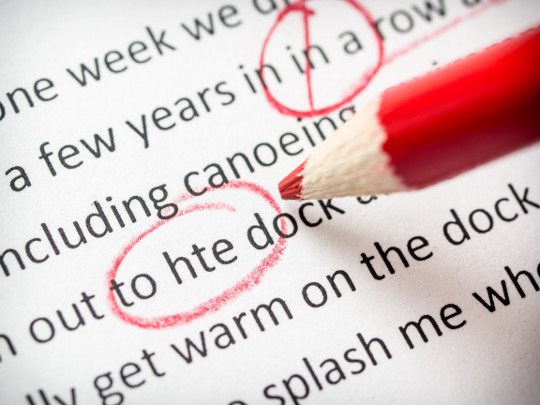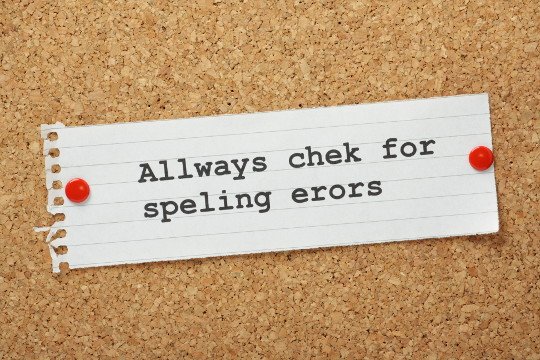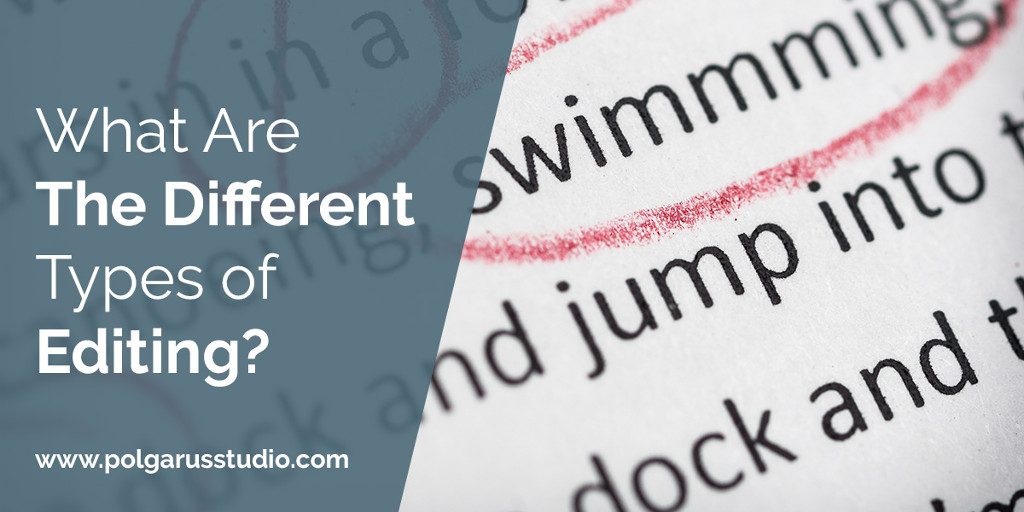When it comes to editing, it’s important to realize that there are several different levels of editing you can get for your book. Unfortunately, there is no clear set of terms that everyone agrees on – two people may use the same term to mean totally different things! In this article, I’ll try to make things as clear as possible, and lay out the terminology we use at Polgarus Studio.
The Types of Editing
Proofreading (also called Word Level Editing) – This is the lightest form of editing, and is intended to be the final pass over your manuscript to catch the last few errors, and give the book its final polish. The focus is spotting errors in spelling, punctuation, and capitalization, as well as watching for missing or duplicate words, and checking for basic grammar mistakes or factual errors. Your manuscript should have already had other forms of editing done to it. There’s no point in trying to proofread something that hasn’t been edited (whether by yourself or someone else), as your writing will have larger issues that need to be addressed first.
Copy Editing (also called Sentence Level Editing) – The editing of your book is carried out to a deeper level. Aside from everything done for proofreading, the editor will start looking at how you are phrasing things in the book, and pay closer attention to sentence-level errors, as well as vocabulary or figures of speech, ambiguous or incorrect statements, etc.
Line Editing (also called Substantial Editing or Paragraph Level Editing) – The editor is now starting to look at your manuscript with an eye toward the bigger picture of the finished book. The editor isn’t just looking at the grammar of the text you have written, but the language you are using to communicate your story to the reader. The revisions to your text will be much more substantive, and a greater focus is given to providing notes for character, style, consistency, transitions, structure, pacing, and continuity.
Developmental Editing (can also be referred to as Conceptual Editing or Manuscript Appraisal) – This type of “editing” is best done early in the writing process – usually after a first or second draft. The editor isn’t going in and correcting what you have written on a line by line basis (although they should still be giving you writing critiques). They are more focused on the overall story of your book, rather than the words you have used. The aim is to ensure the pacing of the story works, your characters are solid and believable, and that your story is logical with no obvious problems or holes. The editor will prepare a report on your manuscript, detailing their thoughts (and suggested changes) for every element of your manuscript. At this level of editing, you will probably be rewriting characters, adding and deleting scenes, and possibly even changing large elements of your story to make everything work better overall.

As you can imagine, when it comes to hiring an editor each level of editing is more time consuming than the last, so the cost of editing rises at each level.
Do you need to hire a professional for every level of editing? No, not at all. If you have a group of readers you trust to provide feedback your manuscript, you might be able to correct the major issues yourself. The advantage of hiring a professional is that it is their job to find the issues for you, and they won’t try to “protect your feelings” by not telling you about the problems. 🙂
If you can afford it, you should definitely hire an editor for at least one of copy editing or proofreading. Copy editing is the more expensive of the two, but also the more valuable of the two for improving the writing in your story. A copy editor will bring a fresh perspective to the writing, seeing the story and narrative for the first time and catching any continuity issues.
Will The Editor Judge Me?
You may be worried that an editor will judge you and your writing. Or you might be afraid that your manuscript will be sent back with a “sea of red” from all the corrections, and a note from the editor saying that your writing sucks and you should just give up. While you may receive a lot of corrections, there is never any judgment in editing. An editor’s goal is to ensure your ideas and visions are made clear to the readers, and that your writing is in the best possible shape it can be for the level of work you want them to do. They want your book to be the best it can be.

Maybe your manuscript will come back with hundreds of corrections in it (my first book certainly did!) So what? That just means your final book will be so much better than before, and more readers will enjoy the story because the writing is clearer!
Seeing edits marked in your manuscript doesn’t help the ego very much (believe me, I know 🙂 ), but it does mean the result will be a lot better than it would have been without an editor.
And to add a final plug, don’t forget that we offer editing 🙂 You can find more about our services at https://www.polgarusstudio.com/edit-your-book/

How can I become a proofreader?!
You can take courses and get qualifications in editing, but that’s not the only way to go. If you don’t want to go the coursework route, the two things you need to learn are a very strong grasp of grammar rules (usually Chicago Manual of Style, which is available online for a subscription, but if you are located in another country and want to focus on authors from that country, you need to learn the grammar rules that they prefer, eg: Oxford), and the ability to stay focused on examining the text you’re reading for faults, rather than falling into the trap of just reading it. Both are learned skills, and you’ll get better with practice.